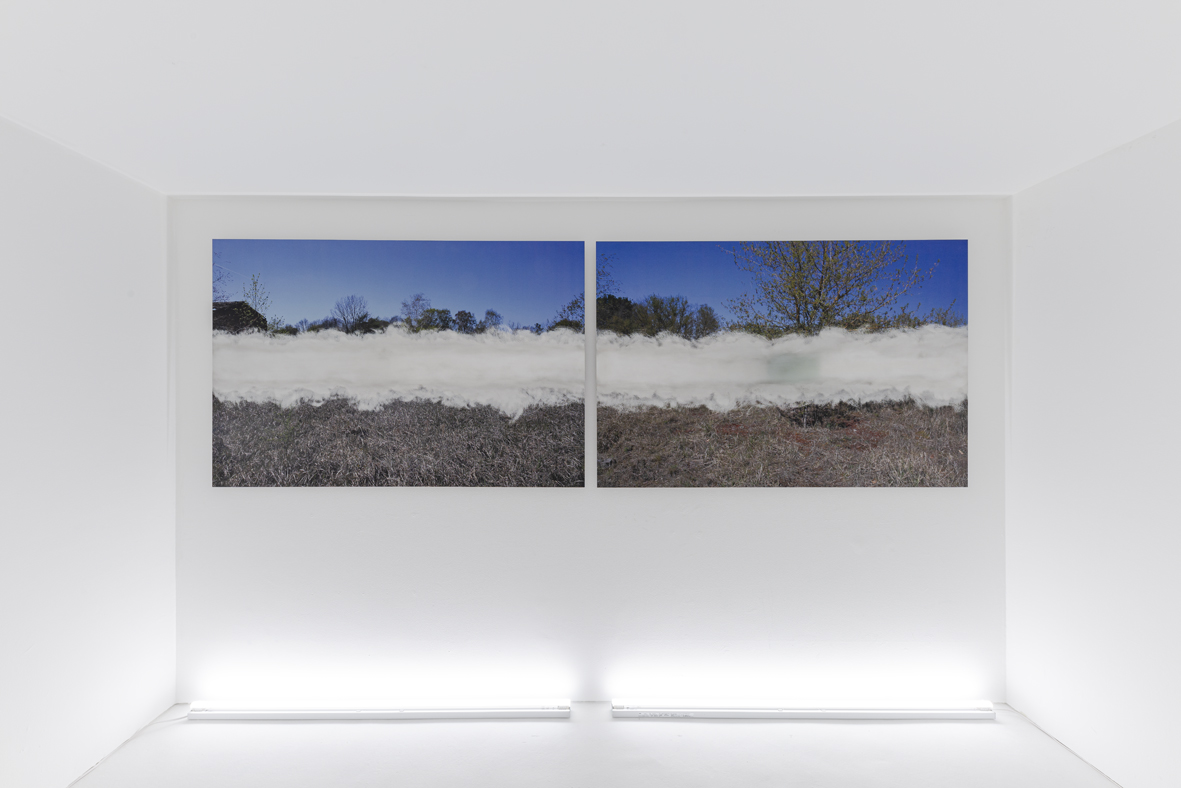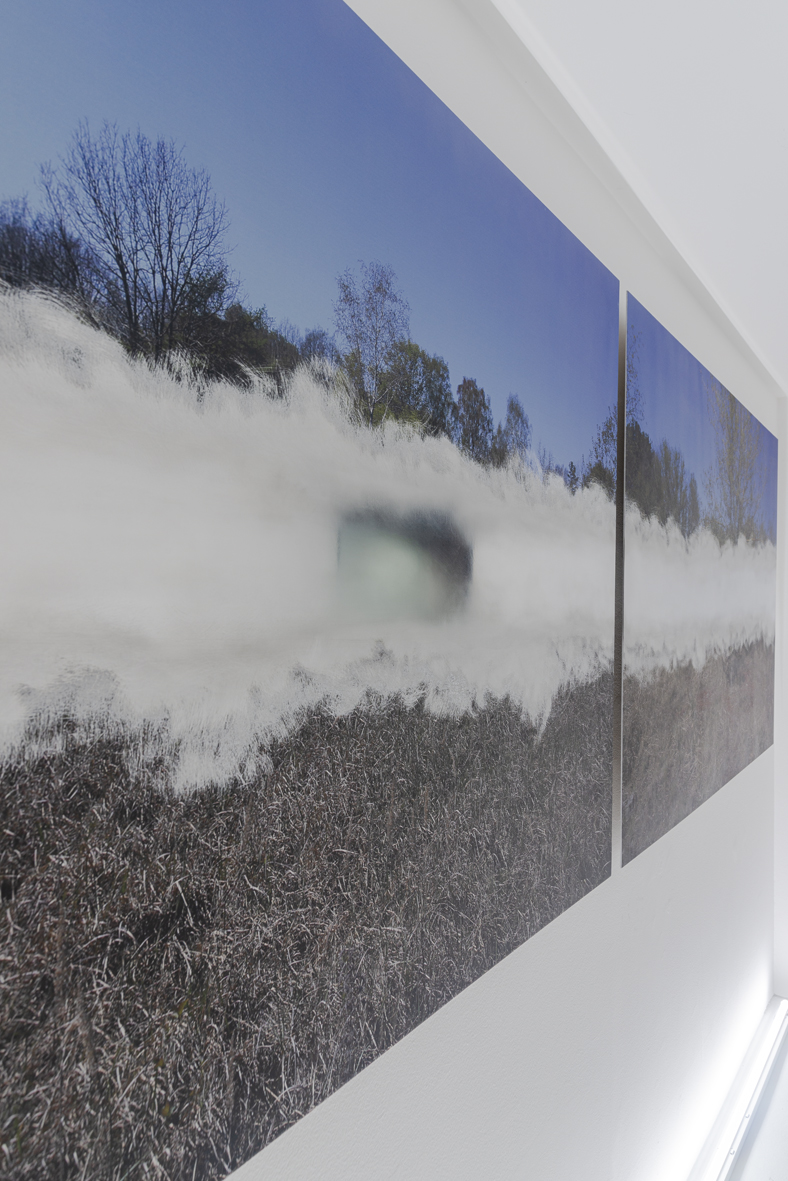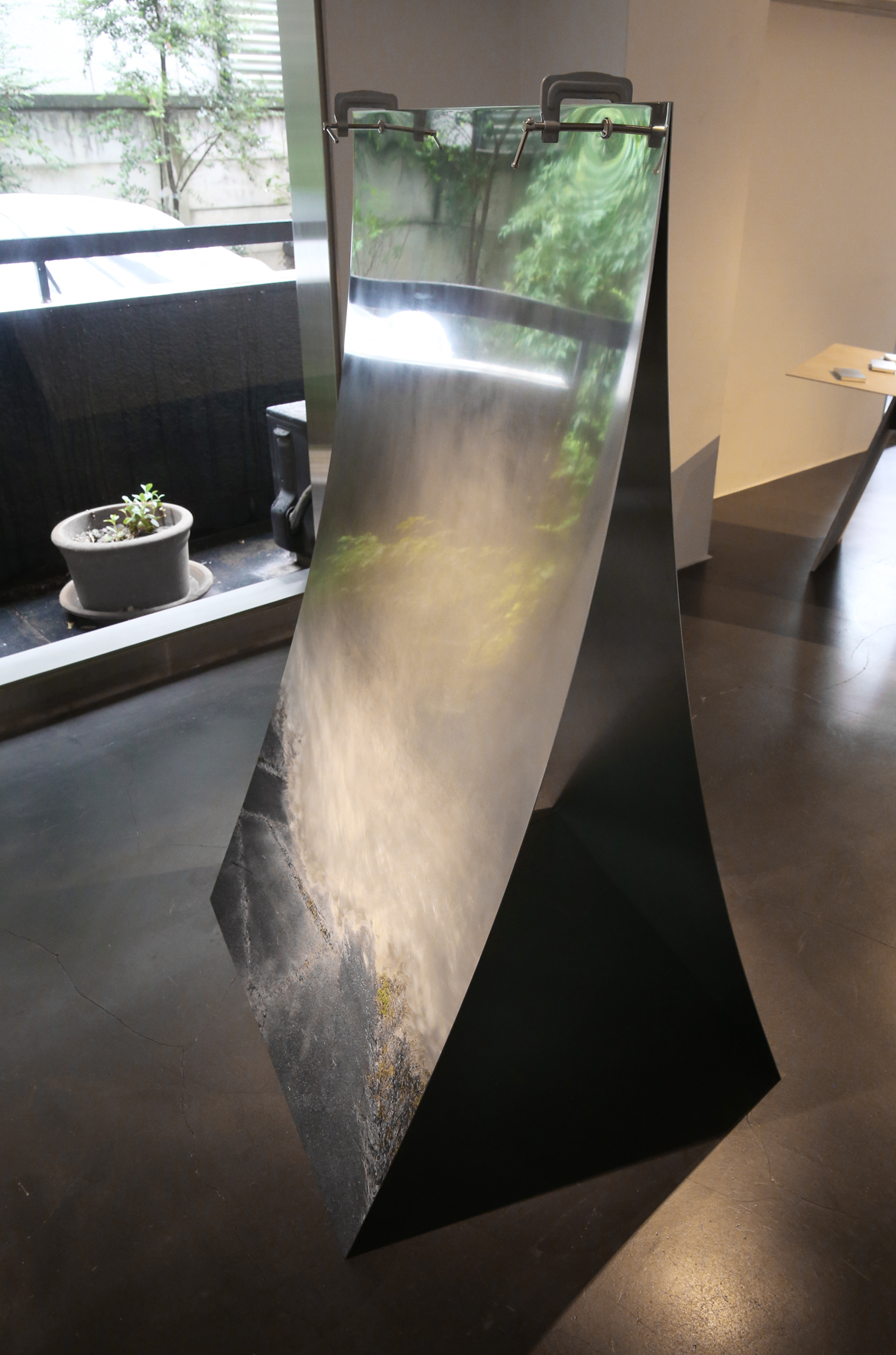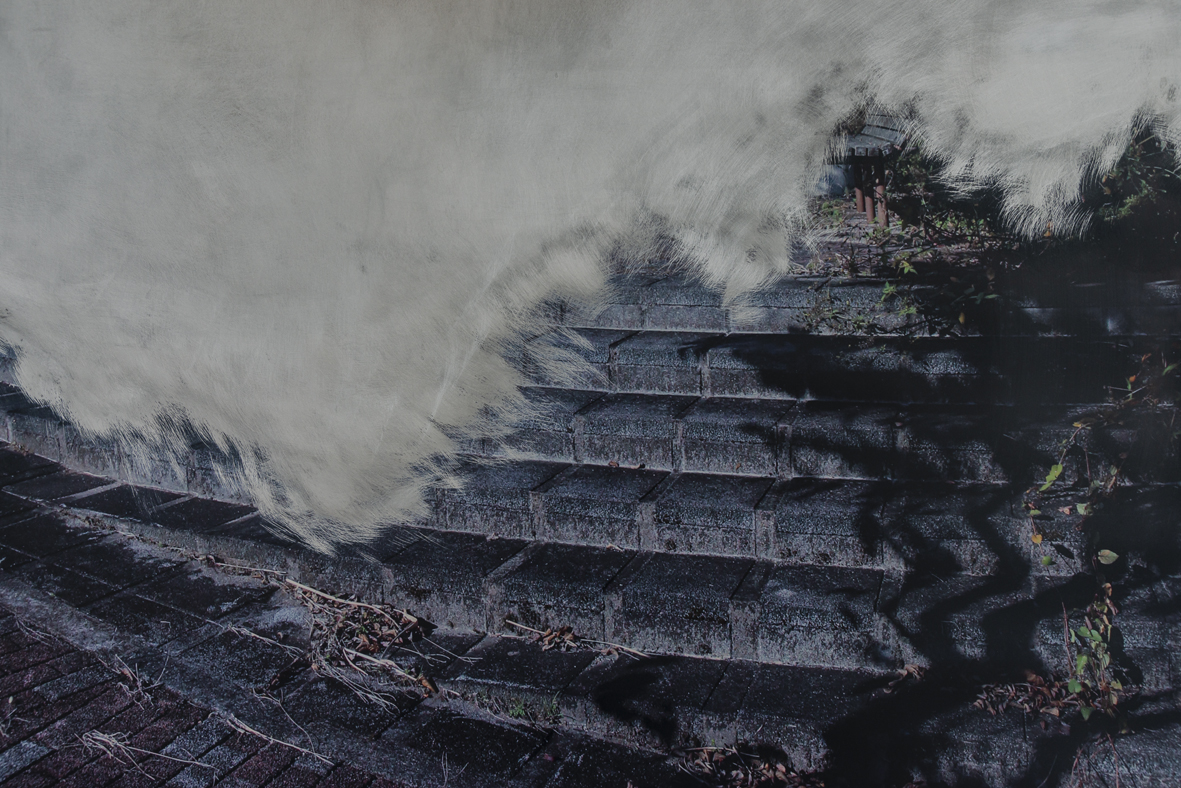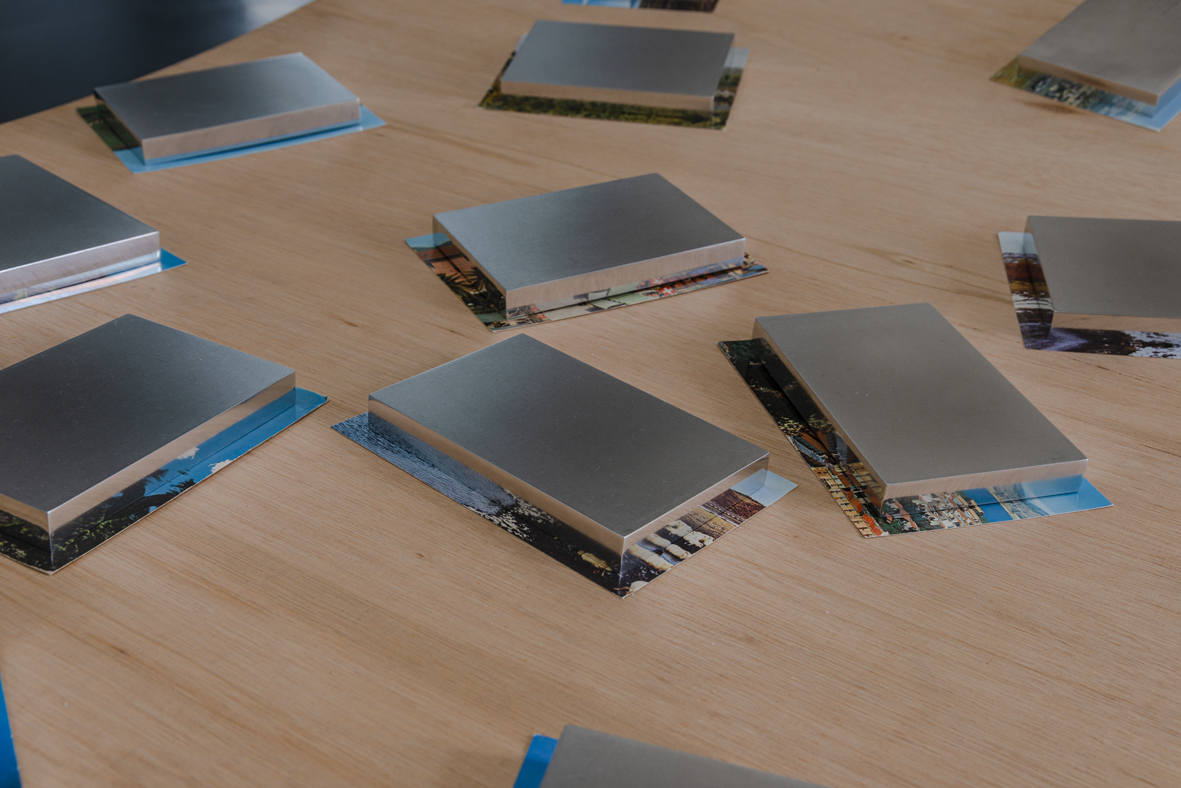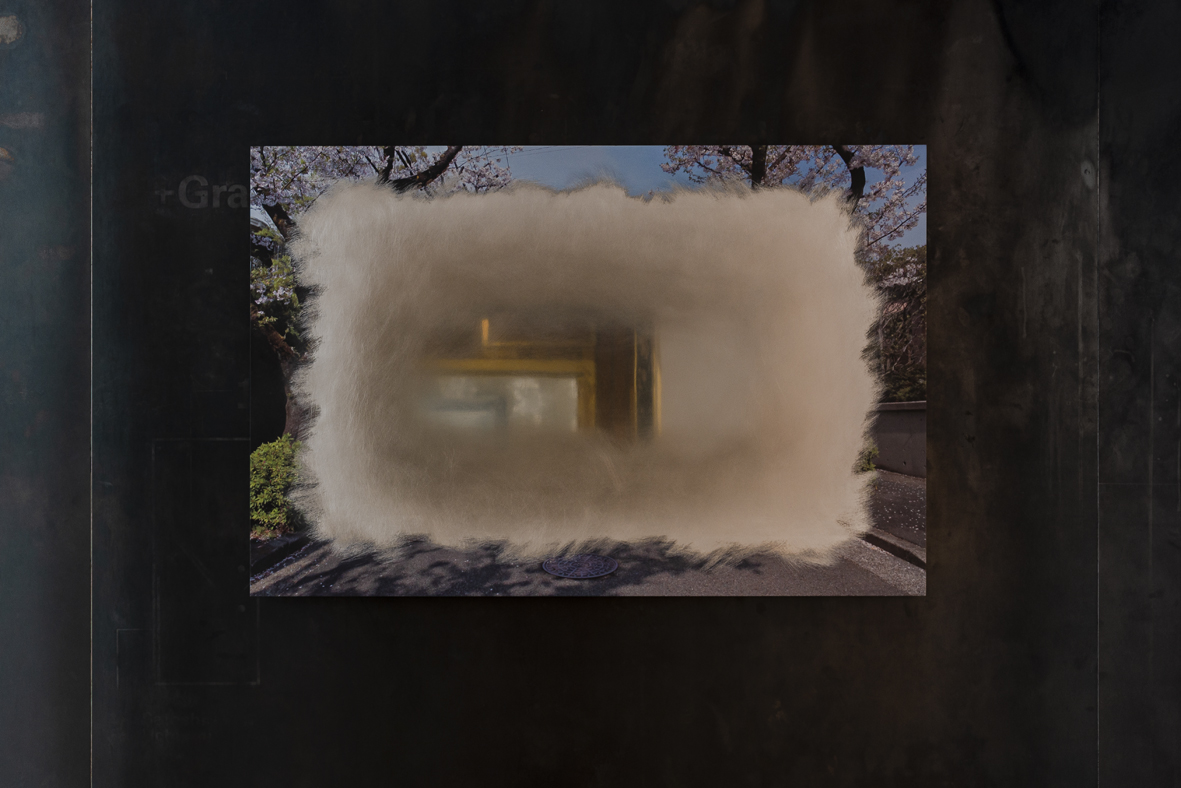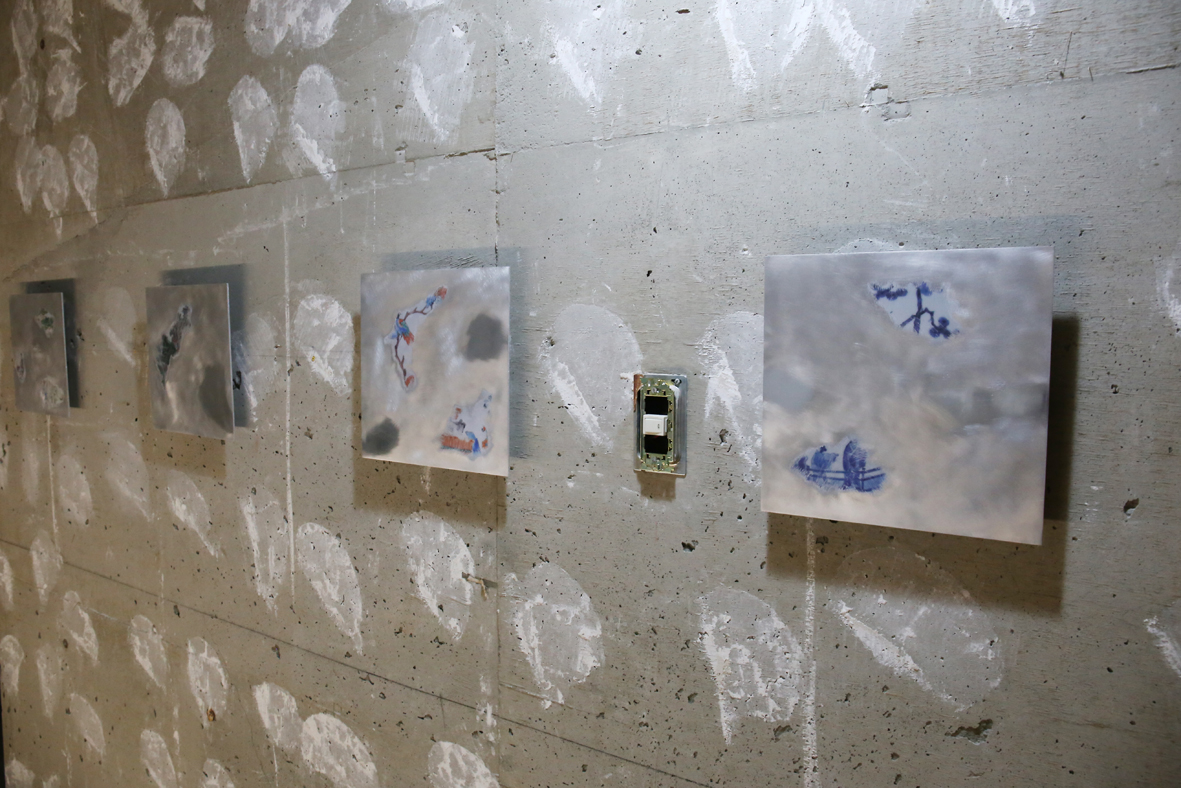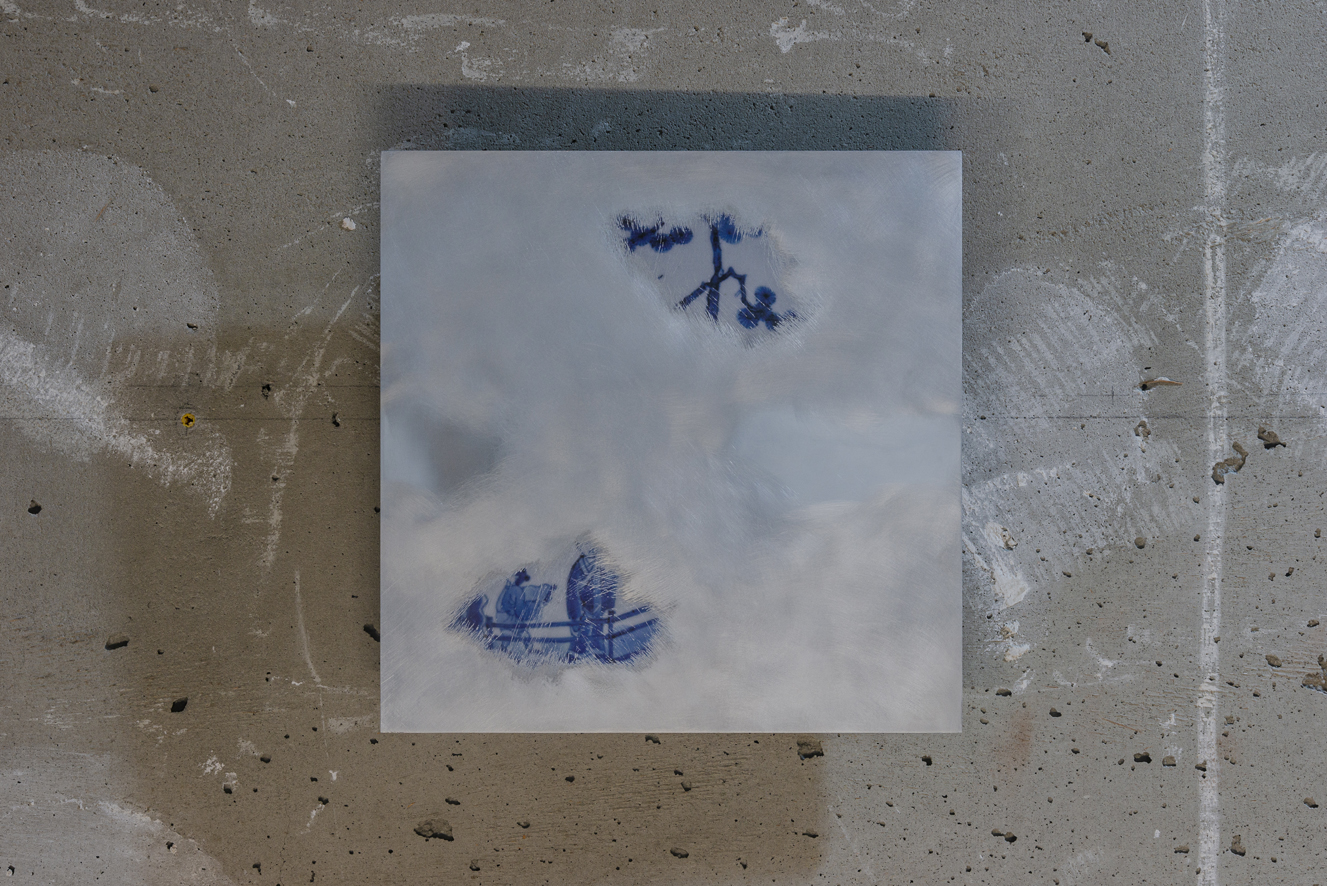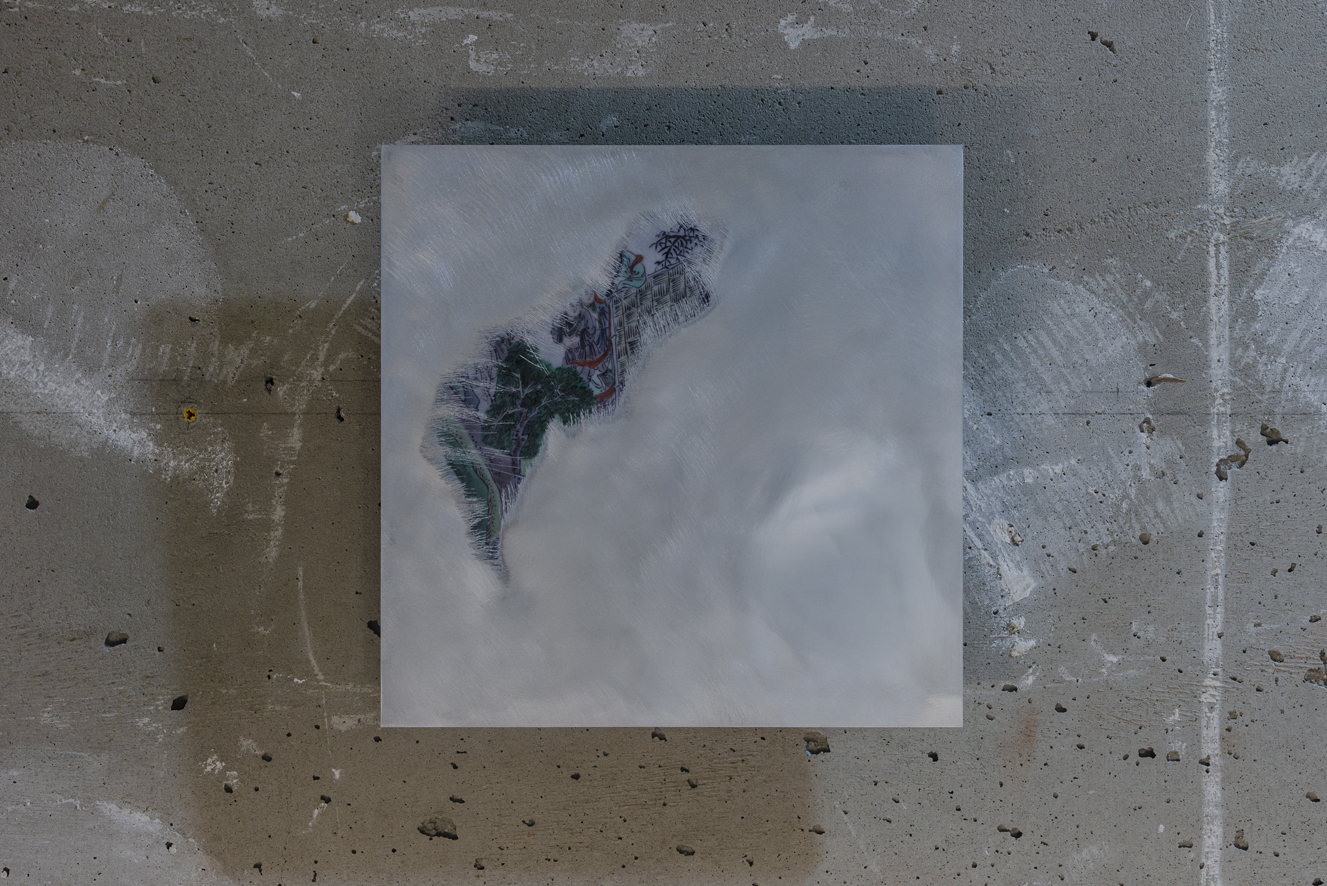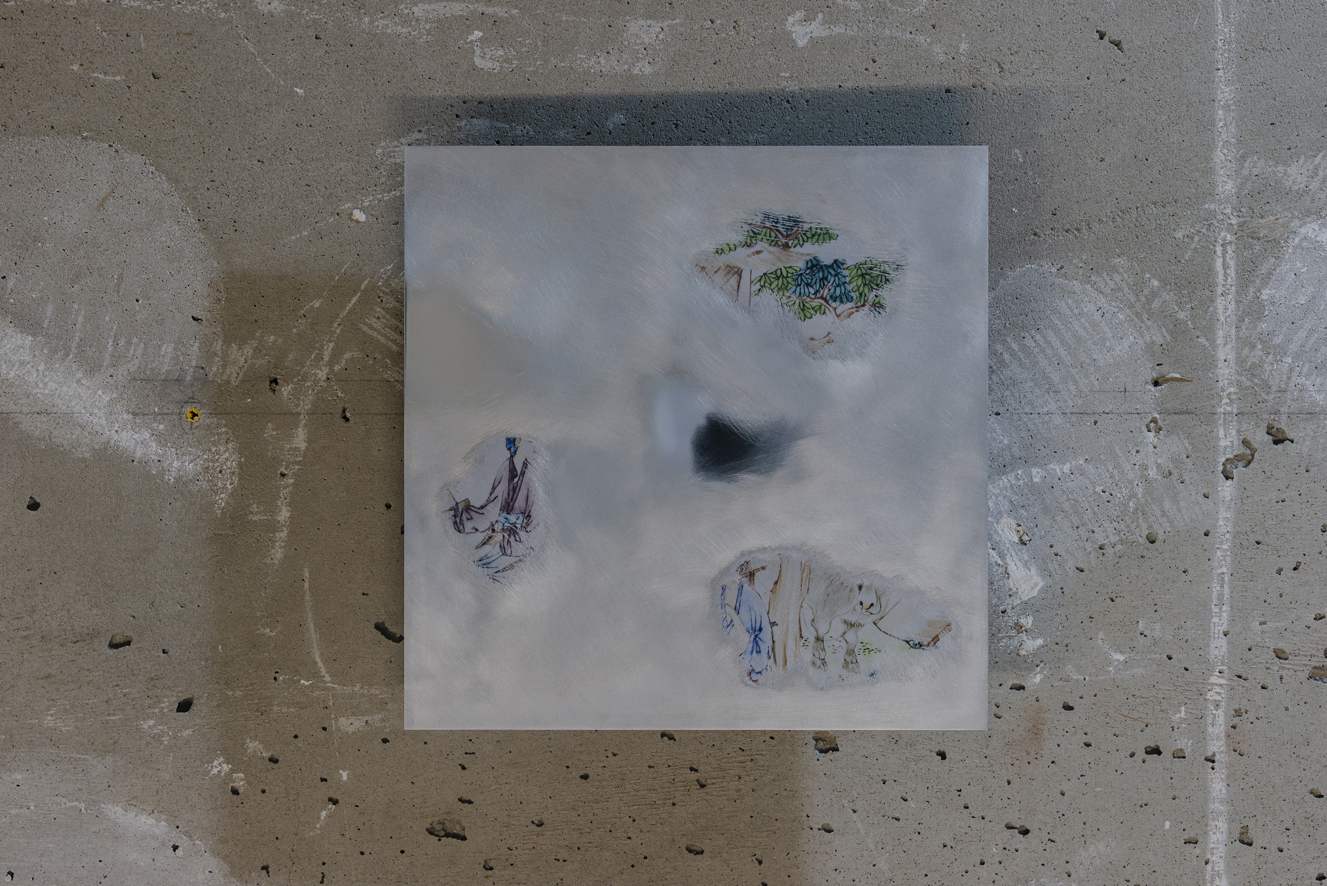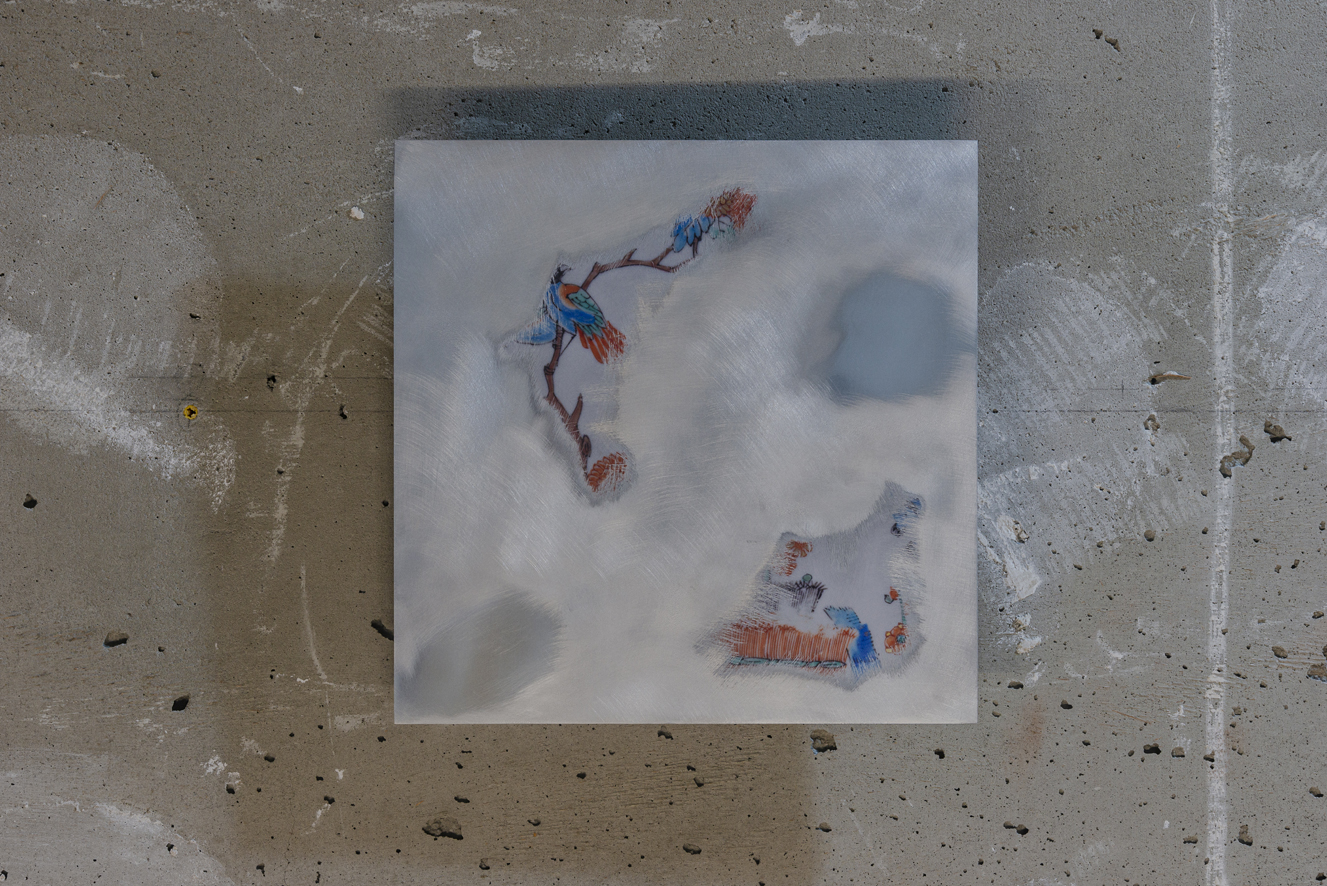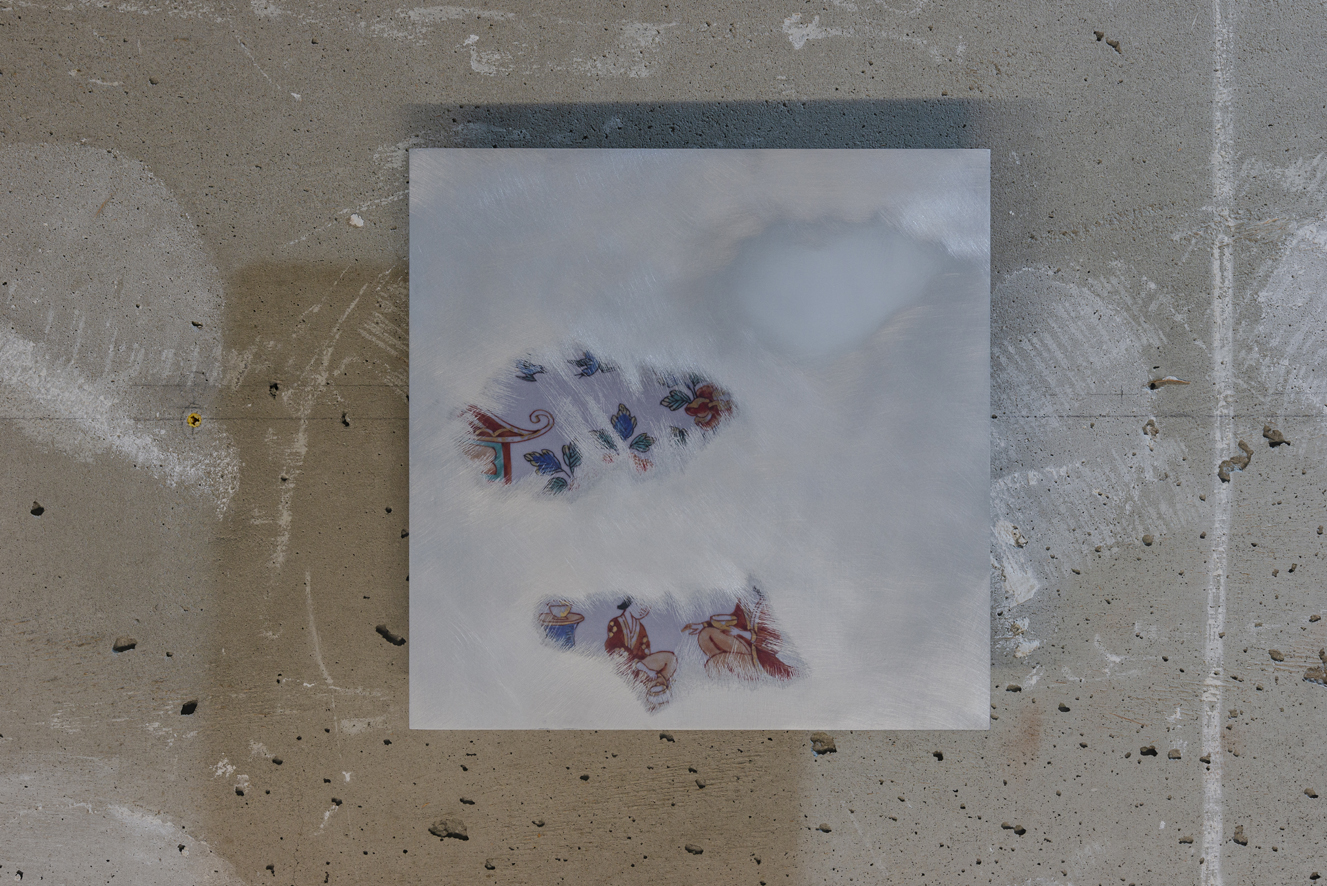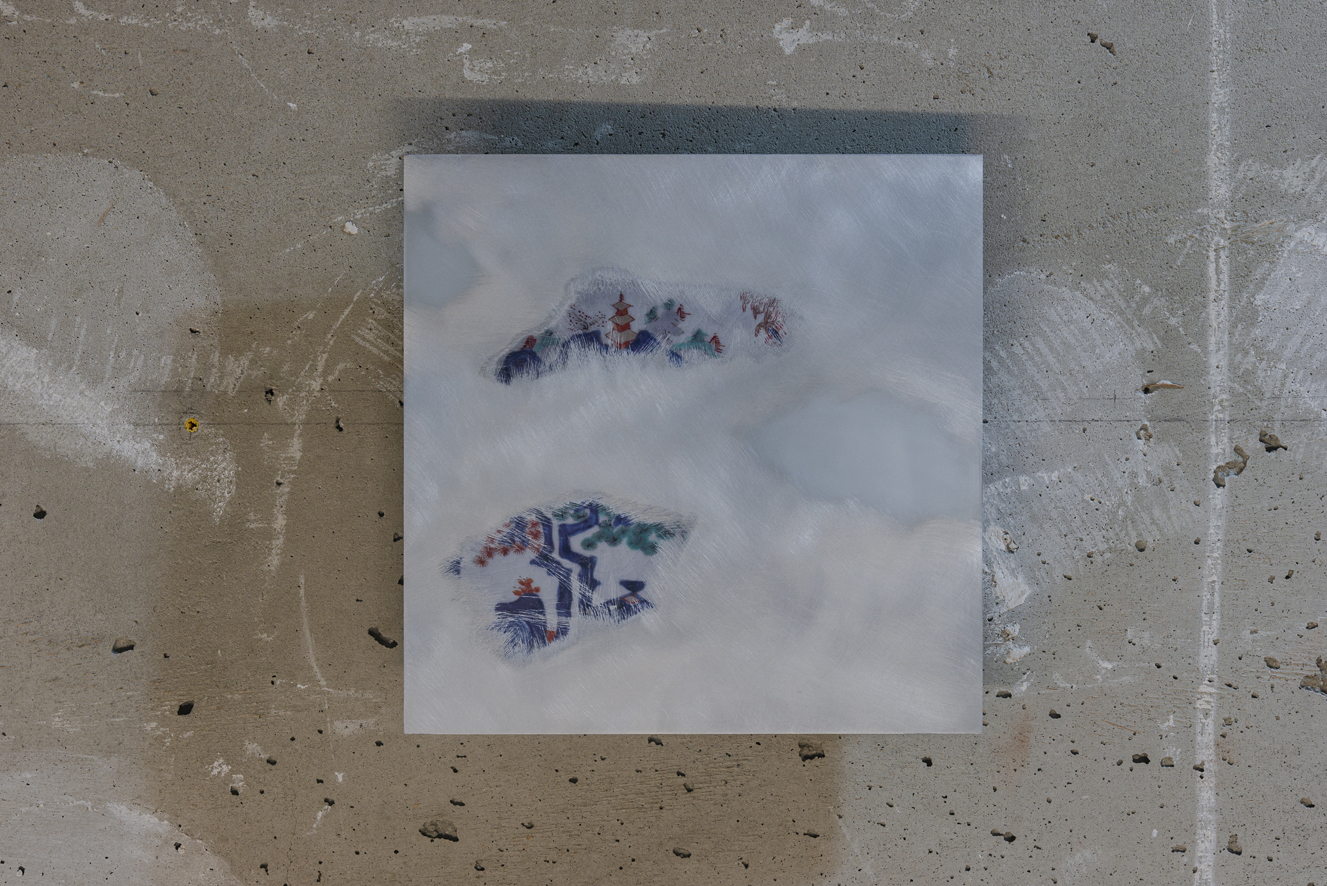I saw a landscape
2020
I saw a landscape (solo exhibition at void+ Tokyo)
Landscape Erosion – Oranienburg / 2019 / 1000×3050×W.30mm (1000×1500×W.30mm each) / Aluminum, UV print (Photos around the Oranienburg Concentration Camp in Berlin)
Landscape Erosion – Tomioka-Town / 2020 / 900×600×H.1500mm / Aluminum, Steel, UV print (Photos of the hard-to-return area around the Tomioka-Town in Fukushima)
Still Absent / 2019 /148×105×H.15mm (each) /Postcard, Aluminum, Plywood
Landscape Erosion – Cherry blossoms in Setagaya / 2020 / 430×645×W.20mm / Aluminum, UV print(photo of a row of cherry blossom trees in Setagaya, Tokyo just before the declaration of an emergency)
Anonymous -1~6 / 2020 / 280×280×W.20mm / Aluminum, UV print(Photos of Antique dishes of the 17th~18th centuries)
I saw a landscape
I grew up in a residential area on the suburbs of Tokyo. My inner landscape originates from the landscape of urban development. While the surrounding environment is changing and becoming more efficient and homogeneous, I saw the former landscape remaining as an invisible afterimage.
In the first place, the world seems to be made of countless invisible elements. For example, elementary particles, radiation, electromagnetic wave, all those scientifically studied discoveries. Time and space, some sign, an atmosphere felt between people each other, those which come out of conceptual ideas or consciousness. Moreover, in the history, institution, social structure, it is the power which does not come out in the table in many cases. However, invisible elements are becoming more forgotten in this contemporary society, as more and more information is turned “visible”.
Therefore, I want to surface as a visual art, the relationship between the invisibility and individuals, society, history, and environment. I want to explore the awareness for what has disappeared, passed away, and become invisible.
I have visited various places and created works focusing on the invisibility that landscape encompassed and the relationship between the landscape and the personal identity formed by it. For example, in the landscape around the hard-to-return area in Fukushima, I saw homes covered with overgrown vegetation. I visited a place in Berlin which was once blocked by a wall. Now there are no walls, instead there are people enjoying picnics. I was at the legacy of a concentration camp. I looked through the fence and I saw trees and bushes. Through these landscapes, the sense of “impermanence” came to my mind. Everyday life that is now in front of us also changes with the passage of time and eventually disappears. It seems difficult to imagine the history and the overlapping of time events, without visible traces or clues.
I scraped those such landscapes. Emerging voids may violently block imagination, rather than generate it. What reflected in the voids been scraped and eroded is ourselves and our world. And beyond that, what landscape can we see?
Jan.2020
Addendum:
During the originally terms of exhibition, my works were completely installed but never opened.
This is because the Tokyo and 3 prefectures in the Capital Area requested citizens to stay home due to the COVID-19 pandemic, and following after that, the Japanese government declared Emergency declaration. I have been working on the theme of invisibility, but it became really invisible works.
Taking this time, I decided to make a new work that reflects this situation.
At this time, cherry blossoms were in full bloom in Tokyo.

